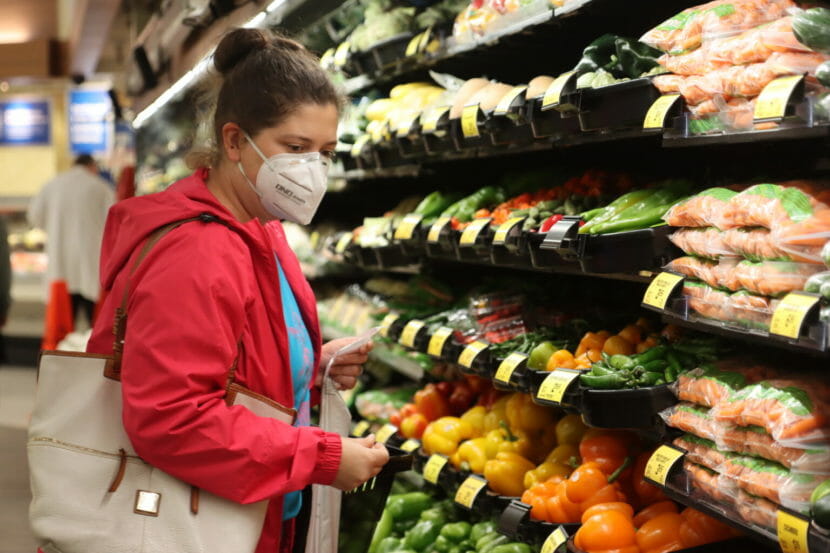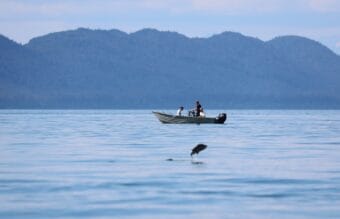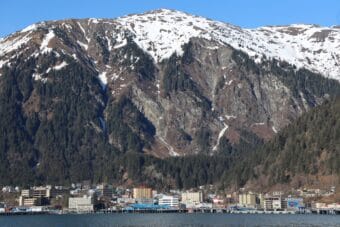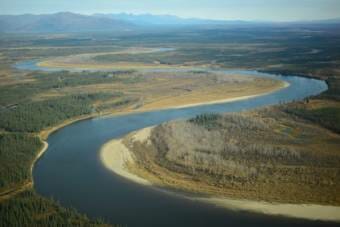
On a grocery run to Carrs in South Anchorage, Natasha Price examined her options for ketchup.
“My husband is very particular with his ketchup, being from Pittsburgh, so he wants Heinz,” she said. “So this is where I really get into it these days.”
She bent down and compared the price per ounce of a bottle of Heinz and a bottle of generic ketchup. The conclusion: the Heinz was more than twice as expensive.
“That’s a huge difference,” she said. “So I’m sorry but my husband is not going to get his preferred ketchup today. We’re getting the regular stuff.”
This kind of calculus is new for Price. But with record inflation driving up the price of basics, it’s her norm now.
The U.S. Bureau of Labor Statistics measured Anchorage and Mat-Su consumer prices up more than 12% from a year ago. It’s one of the highest jumps in the nation.
Price is a florist with a part-time marketing job. Her husband works for the state, and they have a ten-year-old son. She said her family’s income has increased enough to keep costs covered, but she’s still approaching spending with caution.
As she made her way through the aisles, Price checked the sale meat section for a deal on pork — no luck, though — and said no to chicken breasts at $4.29 a pound.
She said she’ll keep some things on her list until she finds them at a better price somewhere else. If they’re dry goods, she might even order them on Amazon.
But others, like artichokes or fresh berries, she’s completely written off her list.
“Grapes have gone up a lot, too. Red grapes are my favorite fruit, and it has to be like a special occasion for grapes. Sort of sad,” she said.
An Alaska Public Media survey on inflation showed Price is not alone in her efforts to rethink her spending. Many Alaskans said they are paying more attention to sales, buying less meat and expensive produce, and stocking up on bulk items from Costco or Amazon. Others are sticking to generic brands or relying on food pantries more often.
Respondents also said they are more cognizant of their driving habits amid rising gas prices, combining errands, cutting out road trips and biking more often.
According to the federal data reported last week, the average cost of groceries in Anchorage and the Mat-Su is up more than 10% from a year ago. Energy prices are up more than 30%, largely driven by the spike in gasoline, which is up more than 60%.
“Another one that has a big weight was housing,” said veteran state labor economist Neal Fried. “That was up by 6.6%. You have to go back to 1982 to find that kind of over the year increase.”
Fried has watched inflation tick steadily upward this year. But he was taken aback by the June inflation numbers for the Anchorage area.
“The last numbers that came out in April were 7.5%, compared to April a year ago, and then boom, 12.4%. I mean, that’s pretty eye popping,” Fried said.
After a brief period of deflation toward the start of the COVID-19 pandemic, inflation has taken hold of the nation’s economy. There are many reasons for this. Pandemic-related supply chain disruptions and labor shortages have forced up the price of goods. Demand for goods and energy is also bouncing back and driving up prices, said Fried.
Market uncertainty due to the Russian invasion of Ukraine is also still at play, said Fried. Oil prices have dipped slightly in the last few weeks, but they remain high.
Meanwhile, Fried said wages are going up nationwide, but not enough to match the rate of inflation.
The federal inflation numbers don’t include rural Alaska. And Fried said without the data it’s difficult to say whether inflation is even worse in rural areas, where the cost of living has always been much higher. But rural respondents to our survey on inflation say brutal cost hikes are making it harder to afford basic necessities.
Susan Tessier, who lives in Kotzebue, said despite uncertain salmon returns she’s trying to stock up on subsistence fish.
“Last year, I just kind of blew off the herring fishing. But this year we went out and got a bunch of herring, and we’re getting our net ready for salmon. And we’re gonna try to jar and put away some salmon and just try to keep our freezers full to combat the prices,” Tessier said.
She added that she noticed people trying to stock up amid rumors that the town’s next barge delivery would come with higher priced gasoline and supplies.
“People are just kind of scrambling. I mean, when you go to the gas pumps now, it’s like there’s a long line of people filling up drums of gas. And at the store, it seems like people are buying extra,” Tessier said.
At the South Anchorage Carrs, Natasha Price finished checking out. She scanned her receipt to make sure all the discounts went through.
“Seven items, that was $28.22. So that’s not too terrible.”
But that doesn’t count the time and energy spent scrutinizing each product to make sure it fit her budget.
Fried said despite the Fed raising interest rates, he doesn’t expect inflation to let up for the rest of this year. He said he’s not making predictions for 2023.
Adelyn Baxter contributed to this report.



